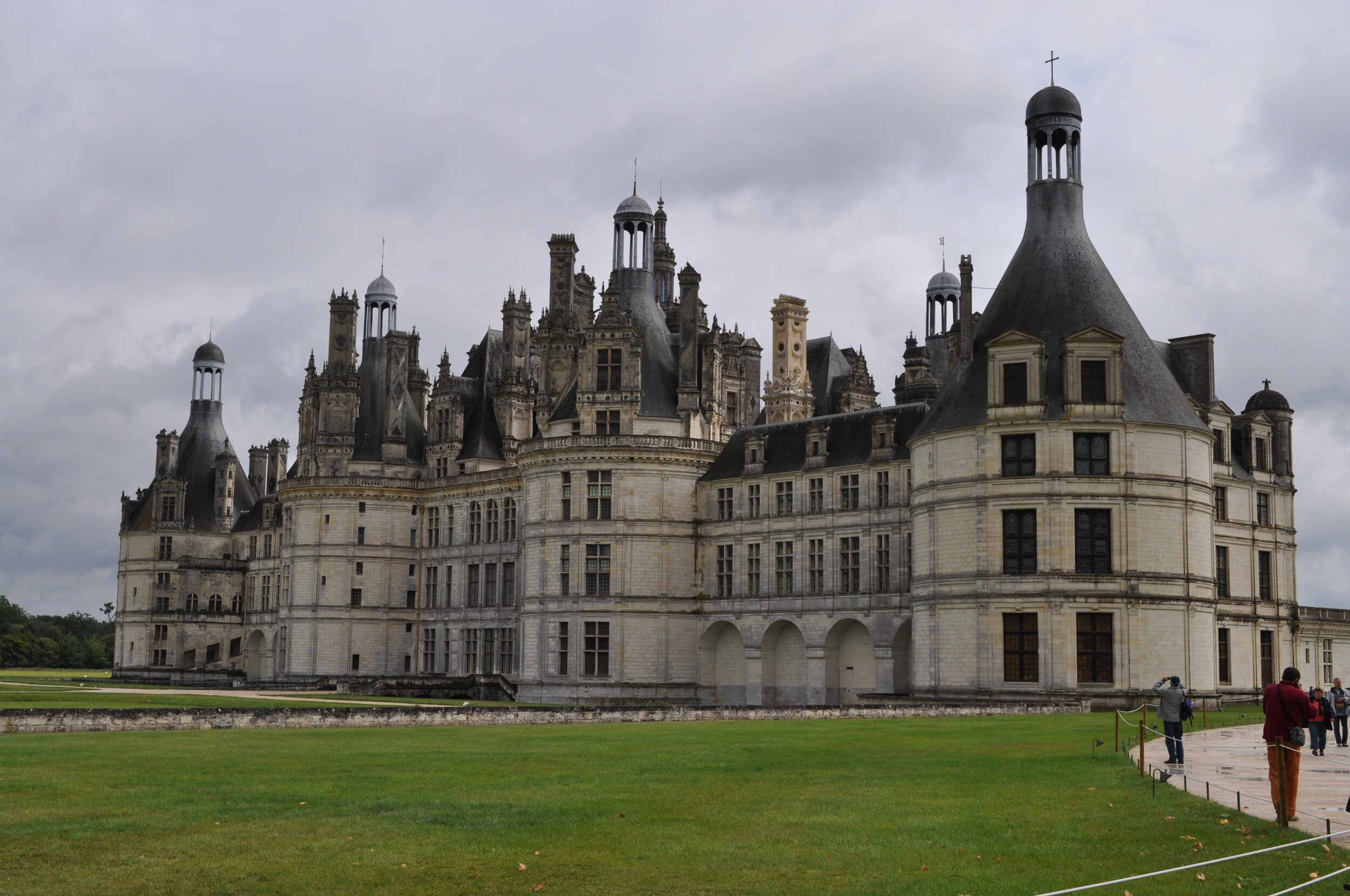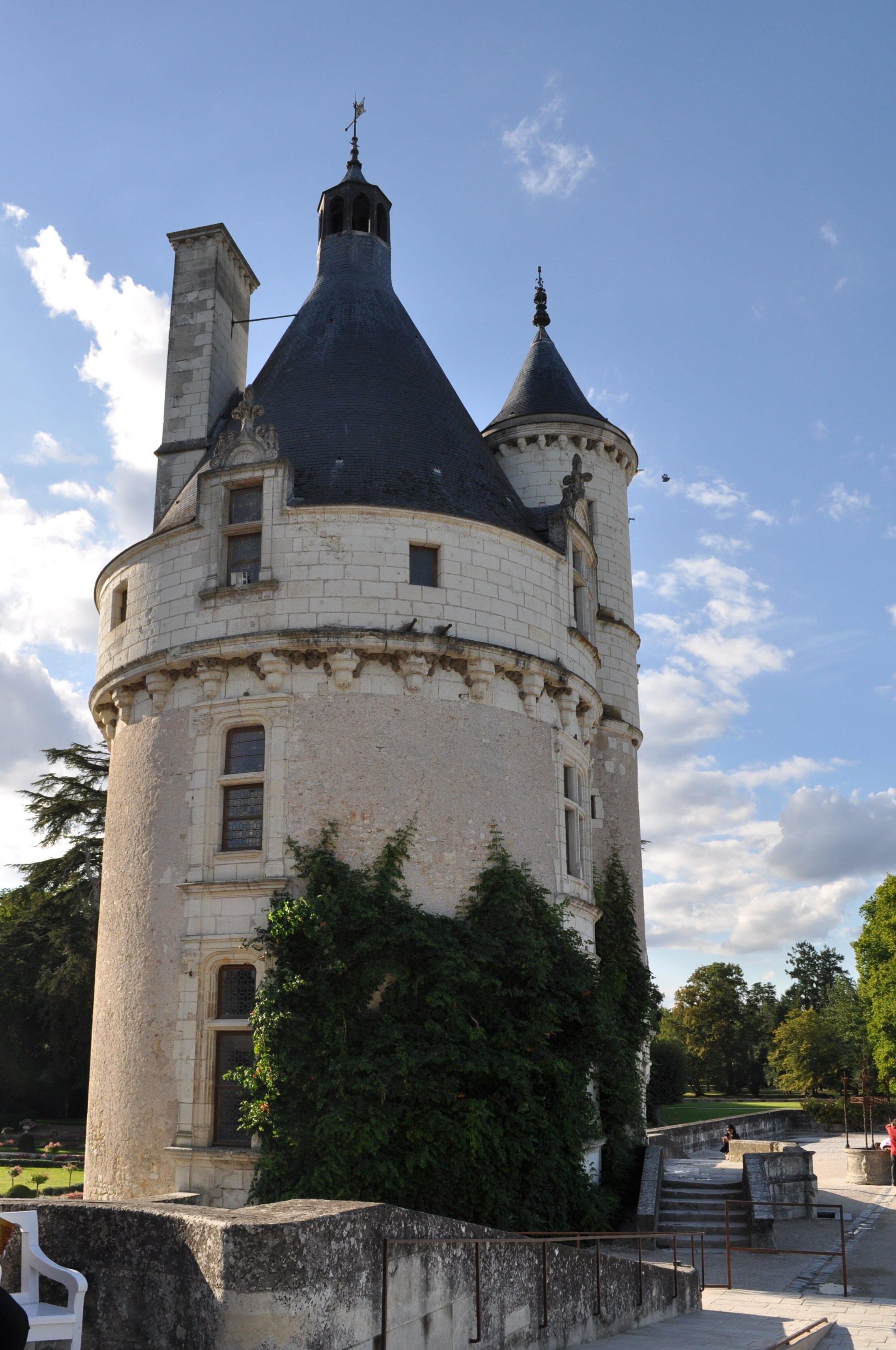
Visiting the Loire Valley
Traveling to the Loire Valley of France is a magical experience, and one that offers a relaxing pace amid the beauty of open spaces, historical villages, charming outdoor markets, and the majesty of its châteaux. The region is about 150 miles stretching from Bourges, across the Sologne and down river to Angers. In the heart of the Val de Loire is the royal enclave of France’s great châteaux including Chambord, Chenonceau, Cheverny, Blois, Amboise, Villandry, and Ussé. These palaces and many more were once home to the wandering royal court. But when François I restored Paris as the capital in the 16th century, as time marched on, they became distant memories tucked in dark forests; stories of these turreted castles inspired many of the fairy tales we know today.
It goes without saying that we enjoyed good wine on this trip. Vouvray is a little village known for its Chenin Blancs which are simple and unpretentious. Loire Valley whites and Vouvray have become my shorthand for a good decision when wine shopping and are among my go-to white wines. It’s been almost ten years since our visit here, even though we’ve been back to Paris twice since then! The next time we can travel to France, exploring more of the Loire Valley, and returning to my favorite château will be high on my list. Even more than the experience of visiting Paris, it is this French country life that speaks to me with its garden paths, walled villages and vineyards. And I fell in love with limestone on this trip, specifically the local, pale ‘tufa,’ as practically all of the centuries-old edifices are constructed of it. Here are just a few major highlights from that 2010 trip.
Visiting the Loire Valley
Sunflower fields in the Loire Valley
Chambord — This is the grandiose hunting lodge built by François I in a walled forest and is the largest château from Renaissance time. The arrow-straight road leading to it cuts through trees to reveal the massive towers and turrets of Chambord. The estate covers 5440 hectares and is the biggest enclosed forest park in Europe, a nature preserve to ospreys, wild boar, and other big game. Leonardo da Vinci had considerable influence over the design of Chambord, though he did not live to see its completion. At the invitation of young François I, he spent the last three years of his life nearby at Clos-Lucé as ‘the first painter, engineer and architect of the King.’ Most notably, he designed the famous double spiral staircase in the central keep of the château. Two people taking a different flight of stairs winding concentrically upwards can see each other through windows in the central column, but will never meet!
Though the king reigned for 32 years, he only spent 72 days here, and in an unfinished state. Throughout Chambord are limestone carvings featuring François I’s monogram intertwined with his emblem, the salamander, which in mythology is an animal able to live through fire. Chambord is awesome in the truest sense of the word with fireplaces big enough to stand inside. It is no wonder Disney drew their inspiration from here for the castle of the Beast!
Chambord
The chapel at Château de Chambord
Leonardo da Vinci’s double spiral staircase
Enormous fireplaces
François I’s emblematic salamander
Chenonceau — Though we only saw a handful of châteaux, Chenonceau is far and away my favorite for its romantic setting, graceful arches spanning a river, its relatively diminutive size compared to others, and the majestic gardens. Chenonceau is protected by water all around; its forest and gardens are surrounded by moats and the château itself bridges the River Cher. It is a study in elegance. Built in the early 1500s by a financier of François I, it was eventually gifted to Diane de Poitiers, mistress to Henri II, and later taken over by his widow, Catherine de’ Medici, who evicted Diane after his death. Diane created a magnificent formal garden complete with a water fountain around which she and her visitors could stroll and admire the surroundings. Catherine later created a more intimate garden opposite Diane’s with a more impressive fountain and pool. In another act of “upsmanship” after the departure of Diane, Catherine ordered the creation of an enormous yew maze in the Italian style. Chenonceau has a working vegetable and cut flower garden which supply much of what is used for the interior floral decoration.
I could go on and on about the splendor of this place, the tapestries, the rib vaulted ceilings, but what stopped me in my tracks were the kitchens. They are located in the two enormous bases of the original piers upon which Chenonceau is built. The pantry contains the biggest fireplace in the château, next to which is the bread oven (!). This space also served as the dining room for the service staff, the butchery where game hooks and chopping blocks remain, and the larder where produce is stored. An interior bridge leads over to the other pier housing the kitchen. The abundant copper, black stoves and tufa-tiled floors were perfection and I mentally noted these elements as inspiration for my future kitchen. This place has seen wars and revolutions over the centuries and faced near-destruction, but has survived and today is on display mostly as it was in the 16th century. Walking through the galleries and rooms, each is brought to life with fabulous flower arrangements from the grounds, or baskets brimming with produce while the sounds of Renaissance and Baroque-era guitar and lute are piped throughout, music which I now love to play at home to transport me back to the château.
The moated entrance to Chenonceau
Classicism amid trees at Chenonceau
A sphinx guards the entrance to Chenonceau
The stable buildings of Chenonceau
The Marques tower of Chenonceau, the remaining structure from the fortified castle which stood here before the château was built
Château de Chenonceau across the River Cher
Château de Chenonceau
Inside the chapel at Chenonceau
The kitchens at Chenonceau
Copper abounds at Chenonceau
The bread oven at Chenonceau
In the larder, produce from Chenonceau’s working gardens and farm
The gallery at Chenonceau, also used as a ballroom, with tufa and slate-tile floor
17th century Audenarde tapestries at Chenonceau and stunning rib vaulted ceilings
The view of the Cher from Chenonceau
Domaine de la Tortinière — This place was, incredibly, our home base during our stay in the Loire Valley. Domaine de la Tortinière is a 19th century château built on the site of a more modest 16th century one. Its surroundings begin with the Roman era given some of the rare trees that exist here and the stone path that was part of the Via Romana. The present structure was built by the widow of a lawyer who wrote the code for France’s civil law still used today. Now, it is in its third generation of family hoteliers, having been made a hotel in the 1950s; Audrey Hepburn is one among its famous guests to have visited.
Nathan and I got to stay in one of the turret bedrooms accessible by a dizzying, winding staircase. Upon entering our room, there was a charming little set of glasses and decanter of a welcome drink: a local aperitif called Épine. It is made with small pieces of a local thorny bush. The leaves are macerated into red wine with brandy and sugar, and the result is really delicious. The grounds are truly beautiful, and as we were there in September, the woods were blanketed in a carpet of pink and white wild cyclamen. As local legend goes, Charles Perrault was inspired to write Sleeping Beauty while wandering through the area. From our time here, I will never forget the most amazing room service of my life. I hope to return some day!
Domaine de la Tortinière
Our welcome aperitif ‘Épine’
The terrace at Domaine de la Tortinière
Pavillon Renaissance
Domaine de la Tortinière
Spiral staircase to our turret room
Forest floor covered with cyclamen in September
Wild cyclamen





























